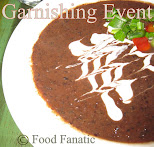 A balance of flavour, appearance, aroma, texture, and colour is what creates a magical dish. Although we have emphasized the importance of the visual appearance of a dish, we must ensure that we don't overpower the taste of the dish. The garnish should decorate the dish, not adulterate it, overload it, or even push it into the background. Less is often more and balance is often virtue. Garnishes should be such that they complement the flavour of the dish or can be taken out before being consumed. Generally, a slice of orange perched on the rim of the glass, a wedge of lime, maraschino cherry, or a sprig of mint is all you need. But remember that cosmetics got to be in sync with flavour.
A balance of flavour, appearance, aroma, texture, and colour is what creates a magical dish. Although we have emphasized the importance of the visual appearance of a dish, we must ensure that we don't overpower the taste of the dish. The garnish should decorate the dish, not adulterate it, overload it, or even push it into the background. Less is often more and balance is often virtue. Garnishes should be such that they complement the flavour of the dish or can be taken out before being consumed. Generally, a slice of orange perched on the rim of the glass, a wedge of lime, maraschino cherry, or a sprig of mint is all you need. But remember that cosmetics got to be in sync with flavour.According to Emily, garnishes can, occasionally, be done very well, but only if they serve a purpose and in right amounts. Garnishes must only add something to a dish and not take away. Emily similar to Kalva uses ingredients of the dish for the garnish as well. This styles creates a balance such that the flavour of the dish is preserved while adding to the look of the dish. Also, Emily's lentil dish clearly indicates that a color balance is also something to keep in mind. Here, she uses white sour cream on top of brown lentil soup, red veggies on top of white sour cream, and green coriander leaf on top of red veggies! What a lovely combination of colorful garnishes is this without taking away from the look of the main dish!
Some garnishing do's and don'ts to alleviate this idea are as follows:
- Pick shiny and clean garnishing fruits or vegetables to add a little extra to shine
- Drizzled them with a little lemon juice then dipped in sugar.
- Fruit can also be dusted with confectioners' sugar for an attractive finish. Try this with cherry on a dessert!
- Avoid vegetables or fruits that discolor quickly. For example, slices of apple and pear are not very suitable for garnishing because they turn brown quickly. If you still want to use them just drizzle them with lemon juice to delay discoloration.
Garnishing tip and techniques archive:
Unconventional wonders: use a stencil
Marvel with vegetables: carve carrots
Simplicity sensation: garnish with edibles
Contrasting charisma: Garnishing by adding a riot of colors to the dish
Fascinate with fruits: Strategic shaping of fruits as garnishes
The traditional trick: Sprinkle coriander leaves and place onion rings























6 comments:
Oh wow helpful post.
Definetely I need help in this area...good info dear.
The curry looks really inviting..The tips in this series are always helpful :)
that is so true...the adornment shouldn't overpower the taste of the dish. I have seen so many hotels ruin their dishes by putting tons of cashews on top of the gravy or way too much cream thhat takes away the spicy character of the dish...
Like you've said..garnishing could be simple, yet elegant!
Very nice and helpful tip..
informative post very helpful. Thks
Post a Comment